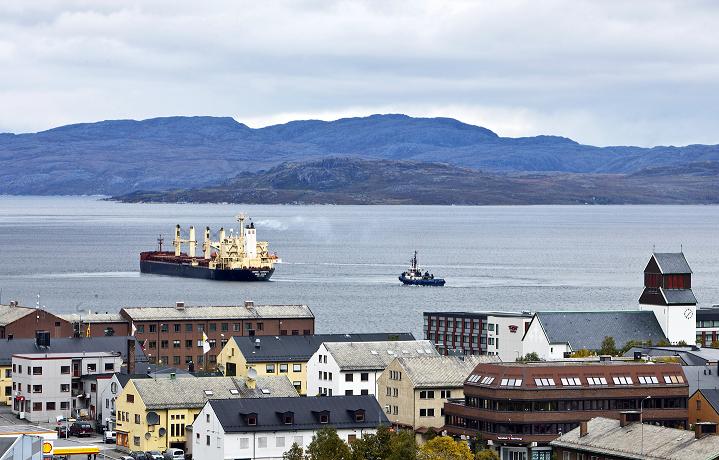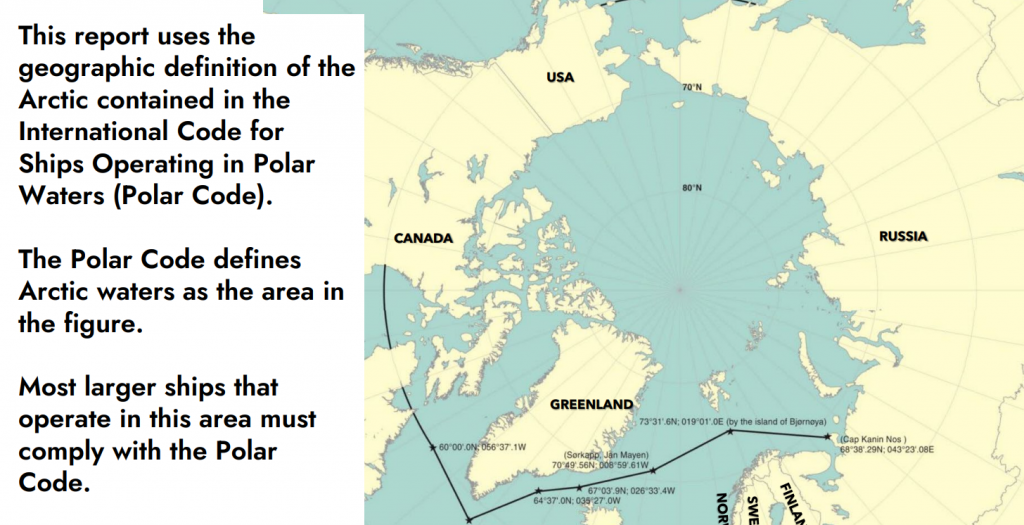Arctic Council report analyzes flag states and legal obligations in Arctic shipping

A recent report examining the flag states of ships travelling in the Arctic shows Russia, Norway and Denmark were the three nations with the most vessels.
The report, “Flag States of Ships in the Arctic,” was done by the Arctic Council’s Protection of the Arctic Marine Environment (PAME) working group using data from its Arctic Ship Traffic Data Base.
The period looked at was 2022, and tallied ships entering the Arctic Polar Code area.
In all, 1661 unique ships were logged.
- Flag states represented in 2022: 42
- Flag states with more than 100 ships represented in Polar Code area: 3
- Flag states with more than 10 ships represented in Polar Code area: 16
Ships flagged to one of the eight Arctic countries: Canada, Denmark, Finland, Iceland, Norway, Sweden, Russia or the United States, accounted for 1349 vessels.
An additional 96 ships were flagged to one of the Arctic Council observer states. (Arctic Council observer states do not participate in the forum’s consensus decisions, but contribute to the Arctic Council through its six working groups.)
Flag states and implications for legal obligations
The report stresses the importance of understanding which countries’ ships are in the Polar Code area as it has implications for safety and conservation.

“Ship registration – or the flag under which a ship sails – plays a vital function in maritime safety and security as well as protection and preservation of the marine environment,” the report said.
“By linking a ship to a State, the system of ship registration creates international legal rights and obligations, both for the ship and for the State whose flag the ship flies.”
The Polar Code
The International Maritime Organization’s International Code for Ships Operating in Polar Waters ( known colloquially as the “Polar Code”) came into force on January 1, 2017 in response to concerns around increased shipping in polar regions.
According to the code, ships get categorized based on the expected sea ice conditions they’ll face and are required to obtain certification.

Additionally, vessel operators must outline their strategies for addressing and steering clear of hazardous ice conditions and temperature challenges.
“While the primary responsibility of ship owners and operators is the safe, efficient, and environmentally sound operation of their ships and the safety and welfare of their crews, Flag States have both the authority and the responsibility to enforce regulations on ships that fly their flag, including regulations relating to ship safety, security, and environmental compliance.” the report said.
“Flag States also have authority and responsibility over the shipboard conduct of the master, officers, and crew of ships that fly their flag.”
- 1 Russia: 885 ships
- 2 Norway: 180 ships
- 3 Denmark: 122 ships
- 4 United States: 88 ships
- 5 Canada: 55 ships
- 6 Marshall Islands: 50 ships
- 7 Netherlands: 34 ships
- 8 Panama: 33 ships
- 9 Bahamas: 25 ships
- 10 Liberia: 20 ships
The report, “Flag States of Ships in the Arctic,” is PAME’s fourth Arctic Shipping Status Report. It was released in December. PAME’s three prior reports examined trends in Arctic shipping and focused on heavy fuel oil.
PAME is one of the Arctic Council’s six working groups and is comprised of international experts.The teams examine issues ranging from environmental protection, to sustainable development, to emergency response in the Arctic.
The Arctic Ship Traffic Database was established by PAME in response to the surge in Arctic ship activity and the lack of up-to-date information, includes figures dating back to 2013.
Comments, tips or story ideas? Contact Eilís at eilis.quinn(at)cbc.ca
Related stories from around the North:
Canada: Canada comes out in favour of heavy fuel oil ban in Arctic, Eye on the Arctic
Finland: Finland investigates oil leak risks from Baltic Sea shipwrecks, Yle News
Greenland: Stranded cruise ship pulled free at high tide in Greenland, the Associated Press
Iceland: Iceland to restrict heavy fuel oil use in territorial waters, Eye on the Arctic
Norway: LNG-reloading operations end in Norway’s Arctic waters, The Independent Barents Observer
Russia: Shipping figures rising on Russia’s Northern Sea Route, The Independent Barents Observer
United States: Carnival Corporation ships switch to cleaner fuel on Arctic cruises, Radio Canada International



